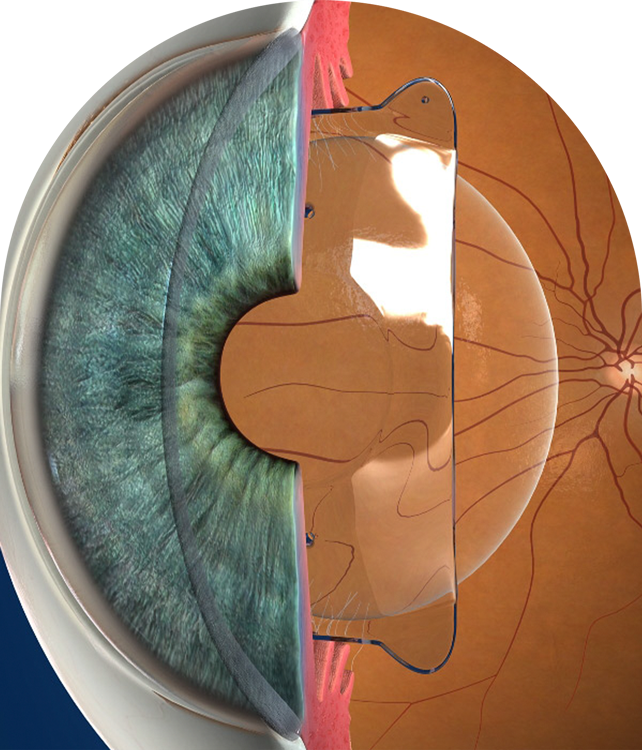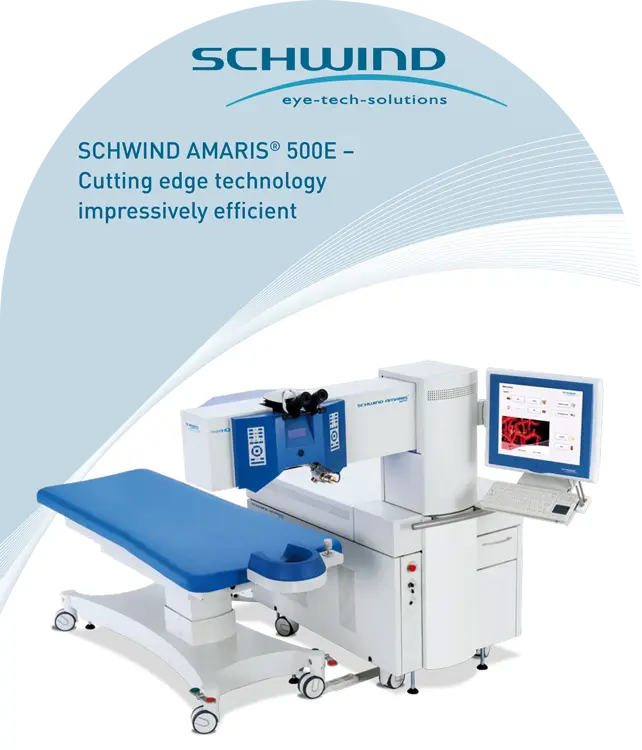
SCHWIND AMARIS® 500E –
Cutting edge technology from the technology leader
Everything that a patient can expect from corneal surgery today:
the SCHWIND AMARIS® 500E stands for the perfection of a premium product. The high performance of this TotalTech Laser across all disciplines has been proven through numerous clinical studies – so that you can provide treatment that combines top results with high safety.
A step ahead
Fast and safe – the SCHWIND AMARIS 500E combines an extremely high abla-tion speed of 500 Hertz with a turbo 5D eye tracker, which actively compensates for the eye movements in five dimen-sions. The result is a good balance between high speed and excellent precision in ablation. In addition, the SCHWIND AMARIS 500E has the key ad-vantages that come with being a leader in technology, such as automatic energy adaptation with Automatic Fluence Level Adjustment, temperature control with Intelligent Thermal Effect Control, the online pachymetry safety system, as well as the SCHWIND CAM software so you can plan customised treatment.

Fast ablation, optimum smoothing
Thanks to the Automatic Fluence Level Adjustment (AFLA) the SCHWIND AMARIS 500E achieves perfect results. Researchers at SCHWIND have de-veloped an algorithm based on complex mathematical calculations which ensures an ideal balance between the total number of laser pulses and the energy delivered. About 80 percent of the ablation is performed with a high fluence value. For the fine work – the remaining 20 percent – the SCHWIND AMARIS 500E automatically switches to a lower fluence. The result is optimum smoothing of the cornea.
Through the extremely small spot size and the Super-Gaussian beam profile you achieve an exceptionally smooth and tissue saving ablation.
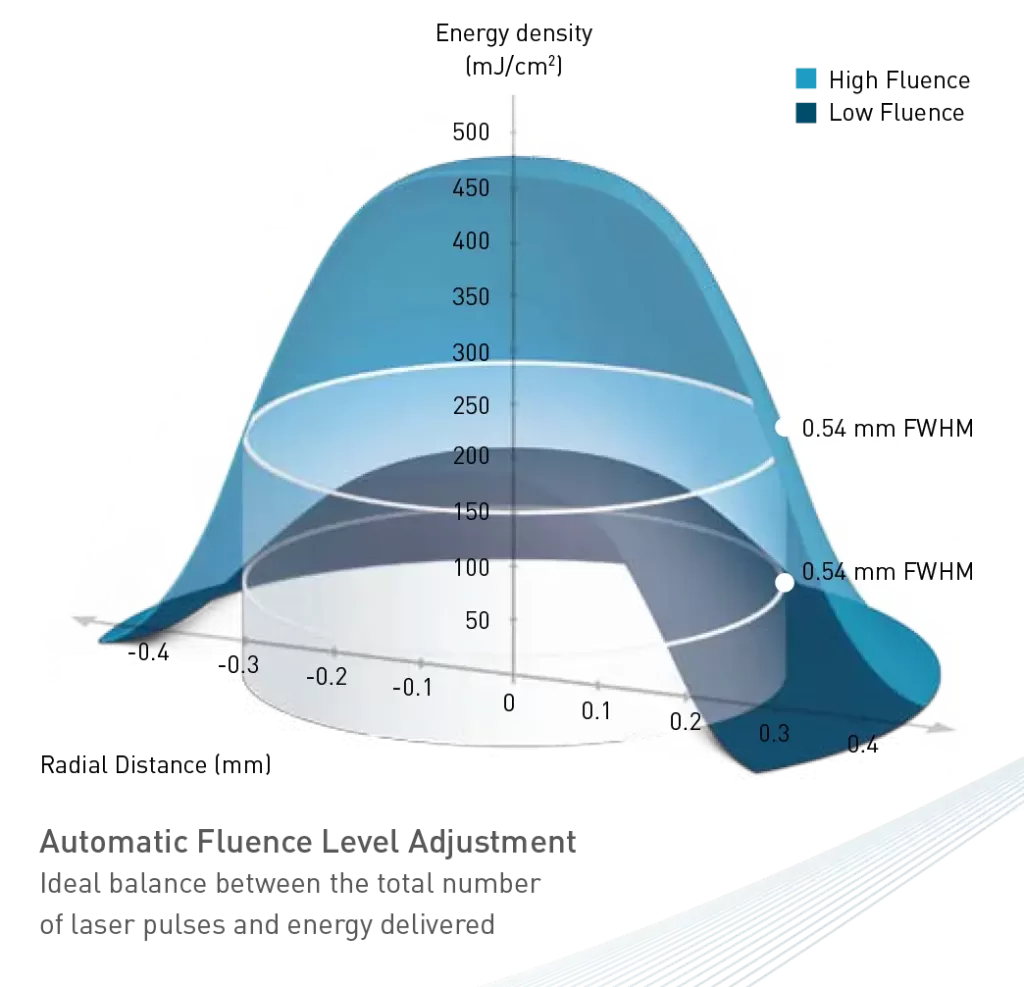
We combine control and intelligence to ensure greater safety for your patients

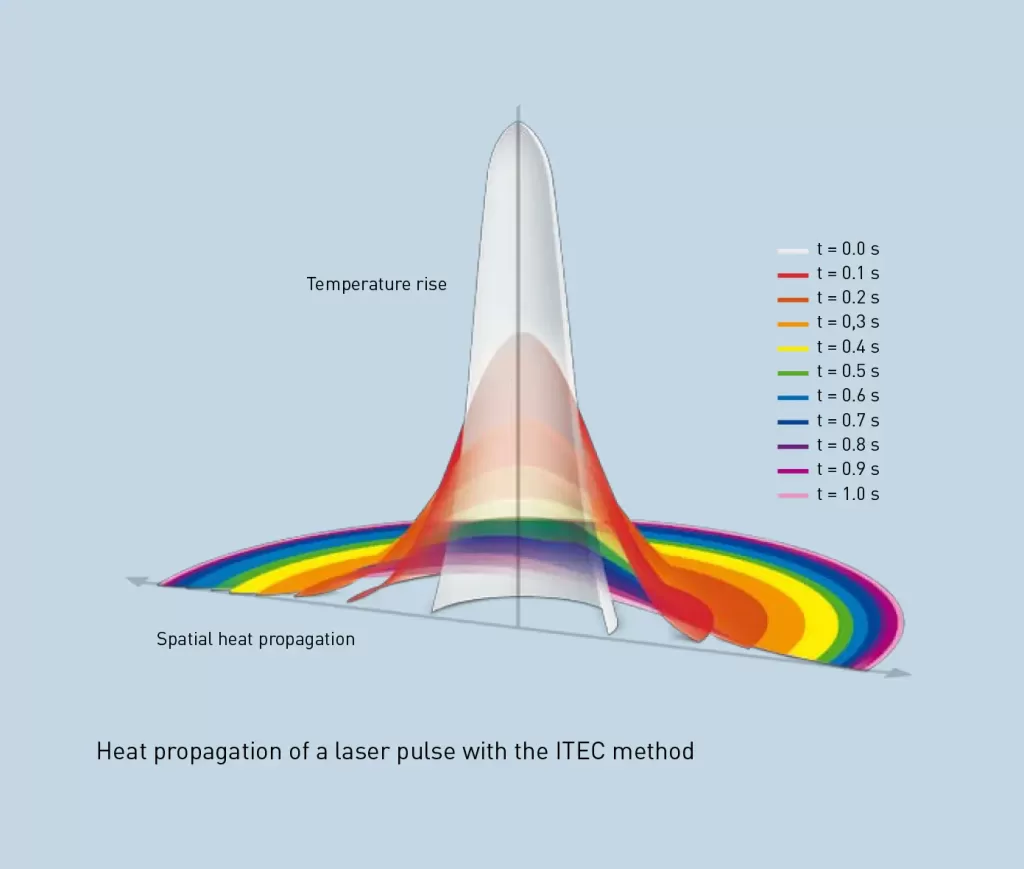
Just as effective as it is gentle
Intelligent Thermal Effect Control
– ITEC – is the name of the thermal control process, that prevents damage to the surrounding corneal tissue, even at a high ablation speed. ITEC ensures that the laser pulses are distributed in a ther-mally optimised, dynamically adapted way, which gives the individual position on the cornea sufficient time to cool off. Following pulses can thereby approach an already cooled position faster. ITEC is clearly superior to the otherwise cus-tomary static procedures. Studies using an infrared thermographic camera have proven that the corneal tissue only heats up by a maximum of 4° Celsius, even at high ablation speeds.
Safety in five dimensions
Speed is only good combined with precision. The 1,050 Hertz turbo eye tracker ensures precise positioning of each individual laser pulse and precisely compensates for any eye movement up to the fifth dimension.
A precise centring of the eye and extremely precise positioning of the laser spot are decisive factors during laser treatment. Apart from the linear eye movements in the first and second dimensions (X/Y axis), the eye tracker of the SCHWIND AMARIS 500E can precisely determine and compensate for horizontal and vertical rolling move-ments (third and fourth dimensions).
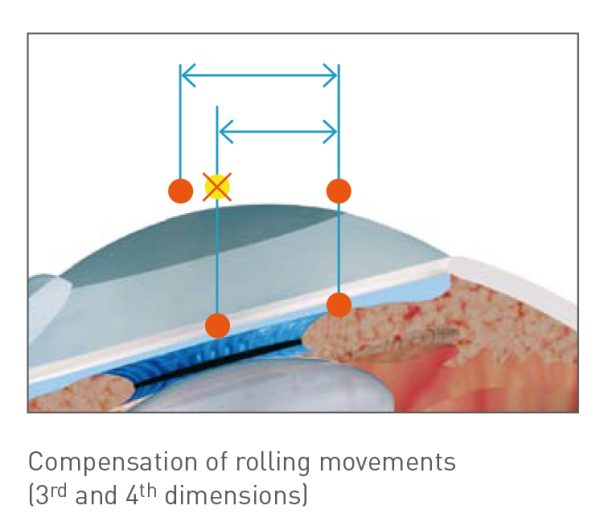
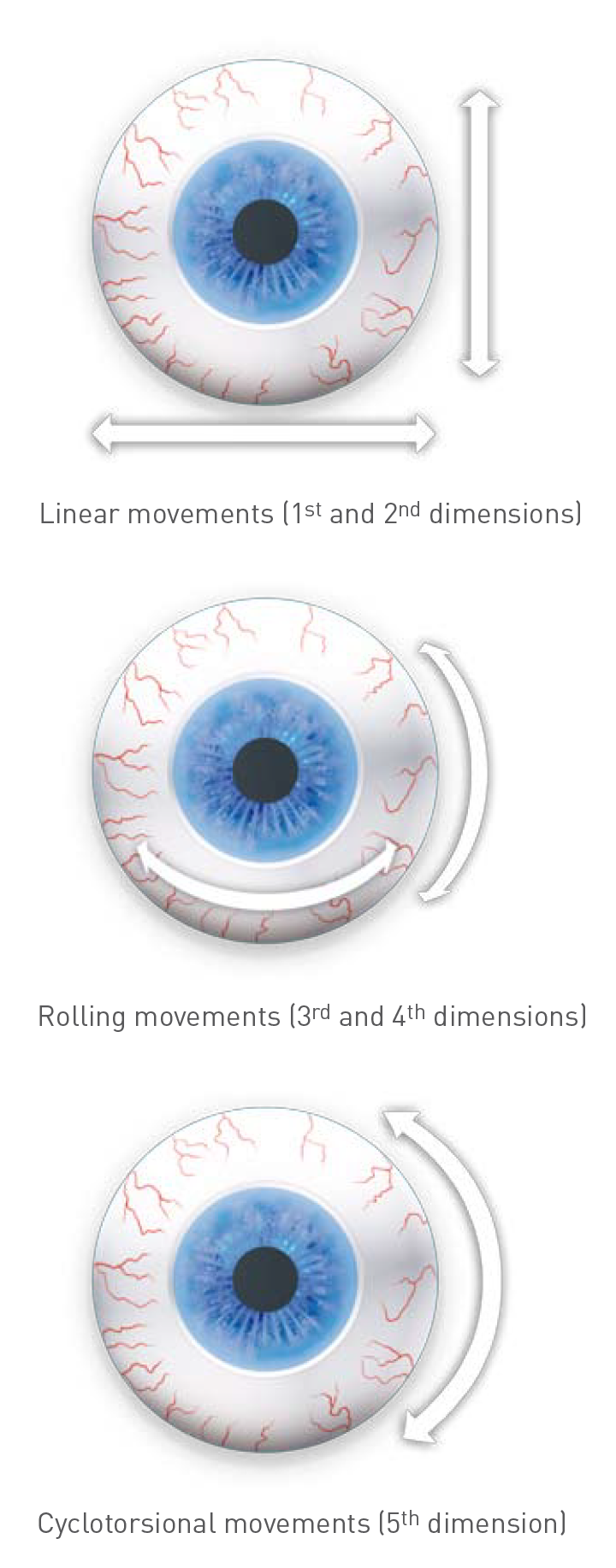
Limbus tracking
Simultaneously with pupil detection, the eye tracker also detects the limbus, whose size always remains constant
– unlike the diameter of the pupil. For this reason, the limbus is used as a reference for ablation, meaning that the original centre of ablation is maintained throughout the laser treatment. This has the great advantage for your patients that decentrations are prevented, and no pu-pil dilating medication is necessary prior to treatment.
Advanced Cyclotorsion Control
In addition, the SCHWIND AMARIS 500E eye tracker detects and compensates for rotations around the visual axis: the cyclotorsion, also known as the fifth dimension. It perfectly compensates for static cyclotorsion, meaning torsional differences between upright and supine positions of the patient, as well as for dynamic cyclotorsion, meaning the rotational movements of the eye during the laser treatment procedure.
Automatic monitoring of the pupil size during static cyclotorsional control ensures additional safety. The illumi-nation is automatically adjusted so that the pupil remains exactly the same size at the beginning of the treatment as it was at the preoperative examination.
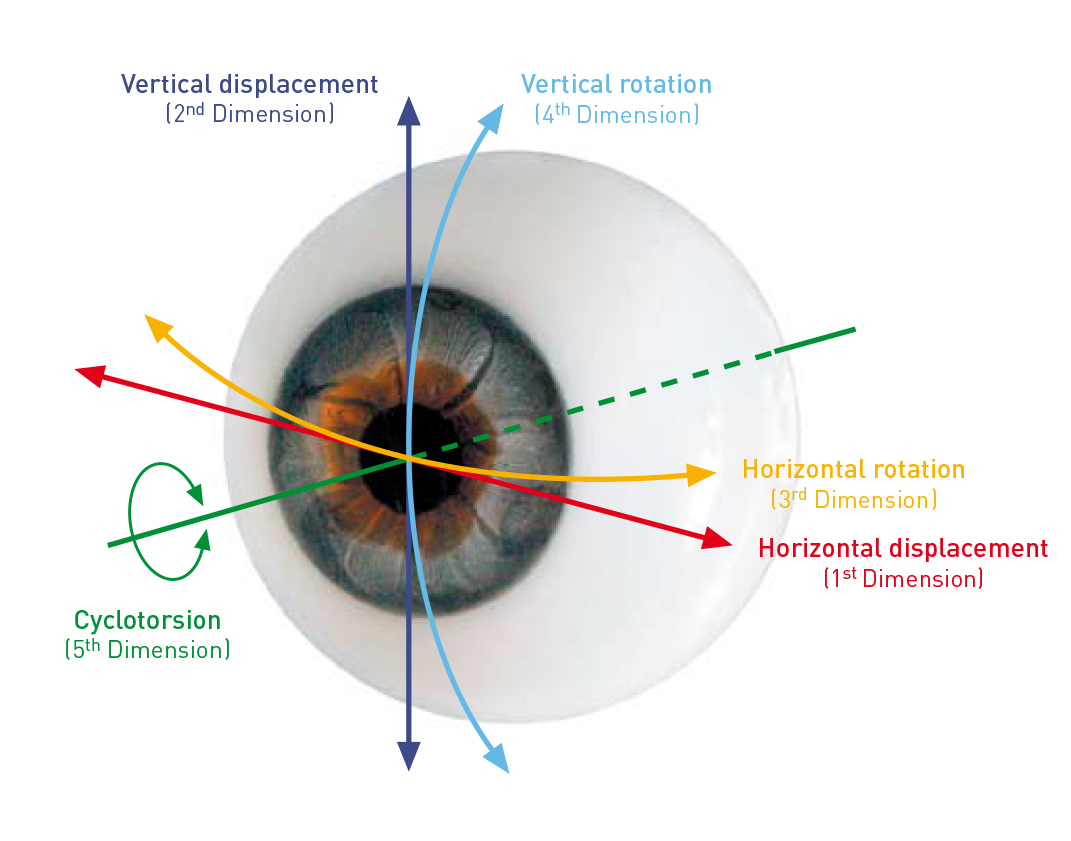
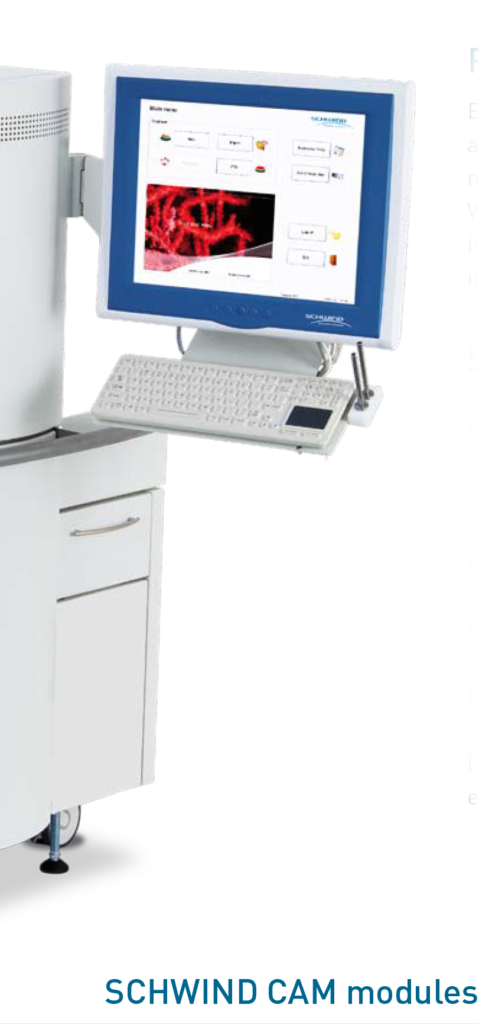
Plan perfectly for any situation
Each treatment is different: that is why the SCHWIND AMARIS 500E with the integrated and modularly designed SCHWIND CAM software makes it possible for you to plan treat-ment individually for your patients for a wide range of applications in corneal surgery. Whether corneal or ocular wavefront – all the required diagnostic data are incorporated into planning. You can be sure that you will not leave out any detail important for the individual ablation.
SCHWIND CAM modules: the advantages
ORK-CAM: a one-of-a-kind intelligent planning tool for extensive and customised refractive laser treatment. Whether “Aberration-Free” or customised treatments based on corneal or ocular wavefront data – aspheric ablation profiles are used.
PresbyMAX®: makes it possible to safely and efficiently treat emmetropia, myopia and hyperopia, as well as astigmatism in patients whose accommodative response is limited. PresbyMAX is based on bi-aspheric, multifocal ablation profiles.
PALK-CAM: allows for safe and extremely precise planning of lamellar keratoplasties. The innovative planning tool is based on the Pachymetry Assisted Laser Keratoplasty (PALK) method. It is suitable for patients who need a corneal transplant and whose endothelium is healthy.

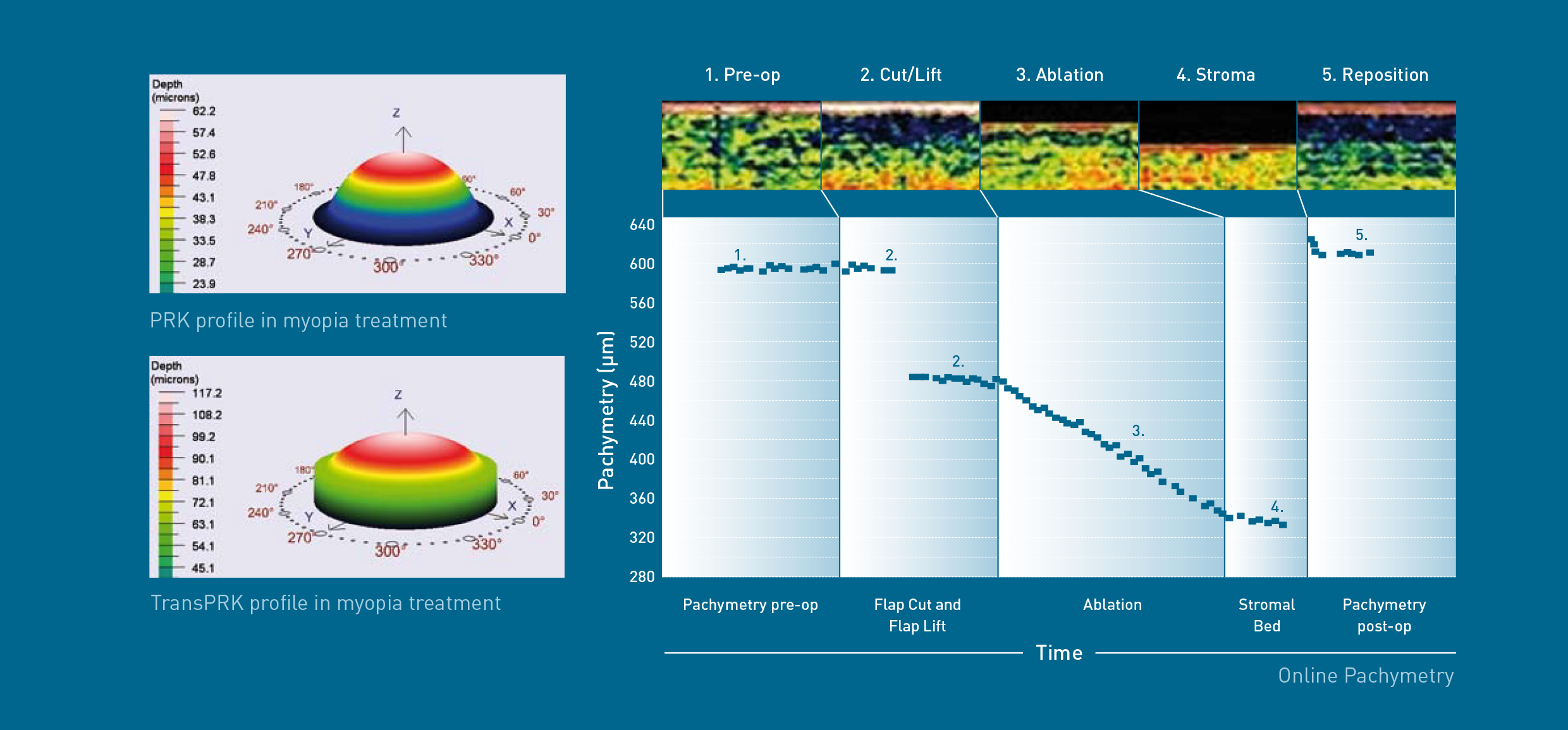
TransPRK – “No-Touch” treatment SCHWIND has further developed the established surface treatments and has adapted them especially for the ORK-CAM software module. The result is what we call TransPRK – the only surface treatment in which the epithelium is ablated with the laser. No instruments touch the eye, and the epithelium can be ablated more precisely and more easily than before. Smaller wound areas speed up the healing process. The ablation of the epithelium and the actual refractive treatment are performed in a single step.
High resolution online pachymetry
The integrated contact-free optical pachymetry provides you with precise information about the thickness of
the cornea throughout the entire duration of the treatment. Thechanges are measured and displayed on the treatment screen online.
The measurements are taken before the preparation and after lifting of the flap, as well as during and after the laser treatment. This ensures that you know exactly how much you have already ablated at all times and how thick
the remaining cornea still is, which increases the intraoperative safety
in refractive treatments. All data are documented in the treatment log.
Ideal climatic conditions
That’s innovation that works in practice: the unique particle aspiration system of the SCHWIND AMARIS technology ensures stable microclimatic conditions across the cornea. The SCHWIND flow design serves as the basis: a thin, laminar stream of air flows exactly
40 millimetres above the cornea. Particles that could shield energy during the ablation are thereby effectively removed. At the same time, the climatic conditions remain constant, preventing the cornea from drying out.

The SCHWIND laser fulfils a long list of crucial needs and wishes expressed by eye surgeons in all areas.

Thomas Neuhann, MD,
EuroEyes ALZ Eye Clinic, Munich, Germany
Designed for perfect processes
We have cast the SCHWIND AMARIS 500E in a compact, ergonomic and mobile design. A series of helpful features faciliate and support your work with the laser. All operating elements are easy to reach and are clearly arranged, ensuring that you can concentrate fully on your work with the patient.
The advantages are in the details
The swivelling patient bed provides added operating comfort. You can use the bed for other stages of treatment without having to change the position of the patient.
With its good contrast, true colour brilliance and a superior depth of focus the high-end microscope developed especially for use with the excimer laser provides optimum working conditions.
The diagnostic slit lamp for flap checking has a compact design and can be moved around two axes across the entire working area.
The exact positioning of the patient eye can be checked using the integrated slit lights. A tilting or decentration of the eye is easy to detect, and the position can be adjusted.
At 235 millimetres, the free working distance between the laser arm and the patient’s eye is generously dimensioned. This makes it possible for you to work comfortably and safely with the microkeratome.
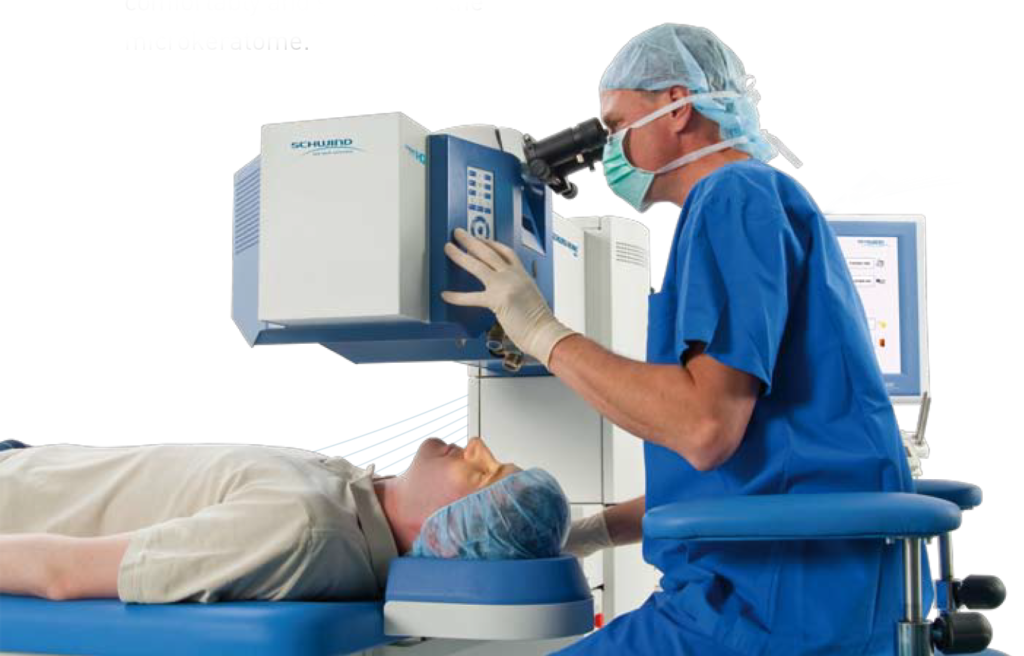
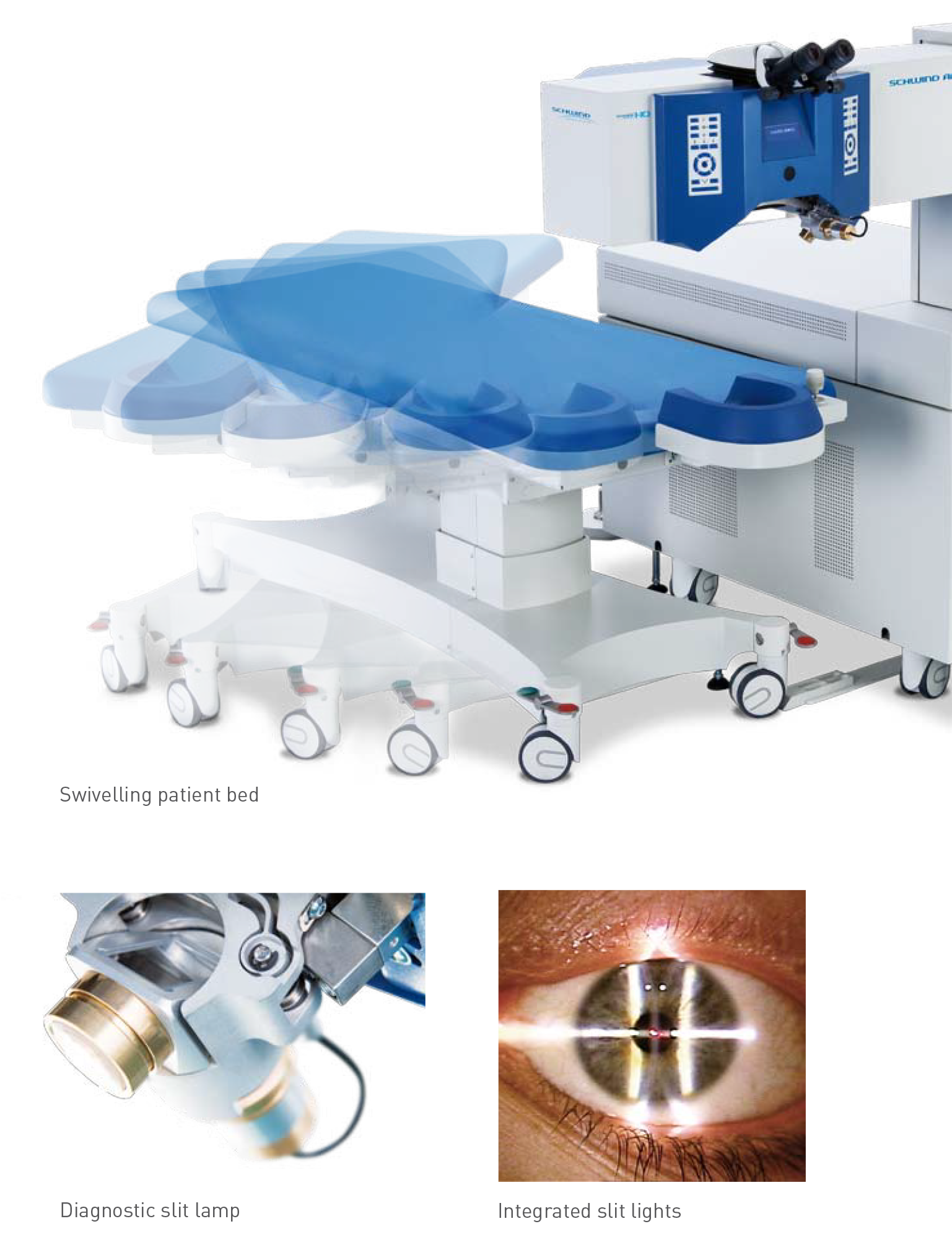

The control elements are easy to reach and can be operated conveniently.

Maria Clara Arbelaez, MD, Muscat Eye Laser Center, Muscat, Oman
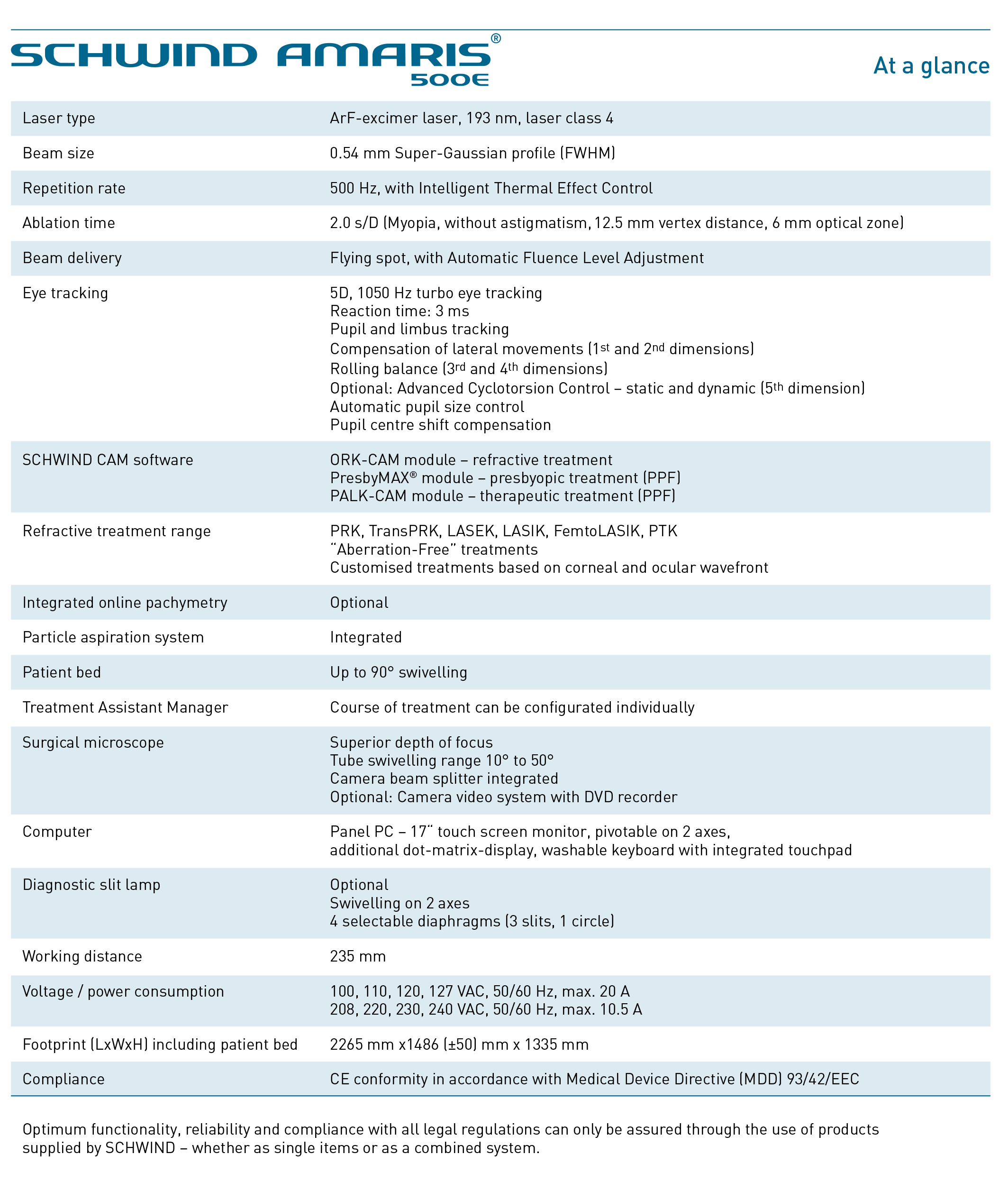
Watch Videos For More...
FAQ
For most patients, the results of LASIK surgery will last forever, however, while the effects of a laser eye treatment (LASIK treatment surgery) are permanent, the benefits can decrease over time.
– Eye disease that causes the cornea to thin and bulge, such as keratoconus.
– Systemic medicines preventing the complete recovery of the cornea.
– Systemic conditions: like uncontrolled diabetes or conditions wherein the collagen level in the body is not normal, for example, the Marfan syndrome.
– Refractive error which is outside the range of laser vision correction
– Pregnant and breastfeeding women
Any patient 18 years old and above can proceed with refractive surgery, there is no upper limit for LASIK, and the surgery depends on the eye health of the individual, in addition to the visual needs.
LASIK eye operation is not painful. Before starting the procedure, the surgeon will use numbing eyedrops for both your eyes. While there might be a feeling of pressure during the ongoing procedure, there will be no feeling of pain.
If you go for a LASIK surgery procedure, the doctor will require an initial baseline evaluation to determine if you are a suitable candidate for the laser eye operation.
It can be normal to experience slight dryness or a feeling of tired eyes on the day of the procedure. The eyes are kept comfortable post-procedure by a surgeon-guided regimen of medicated drops and artificial tears, post-procedure, rest for 24 hours, and stay inside on the day of laser treatment. you can resume your sports activity the next day.
Yes. The procedure needs you to look into the target green light of the laser to identify the centre of your vision. Our surgeons are excellent at talking to you throughout the procedure. We use eye drops to numb your eyes and you will not feel any pain during the procedure.
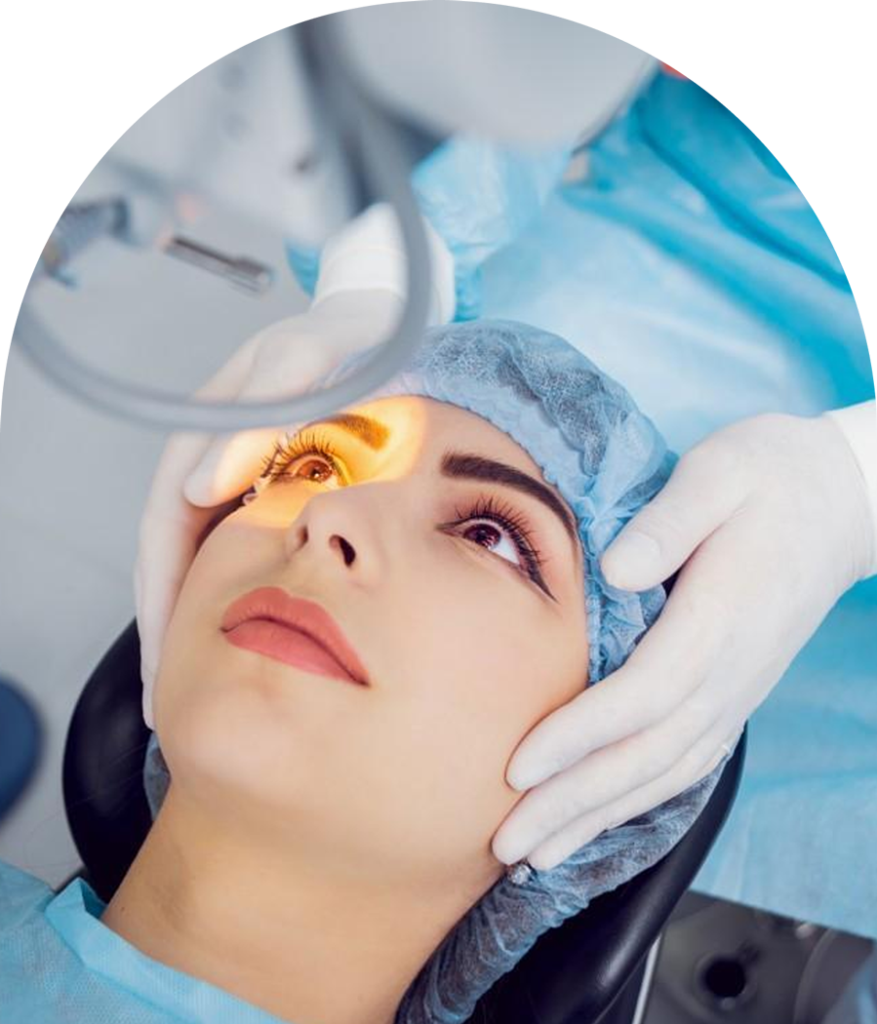
Refractive Surgery
Refractive surgery is a surgical procedure performed to correct the refractive error of the eye. It is usually done to get rid dependence on glasses or contact lenes. It can be performed in a patient with stable refractive error after the age of 18 years.
Complete medical history along with detailed eye examination is mandatory in all candidates.
The current refractive procedure can be classified as corneal procedures and lens-based surgery.
Corneal procedures:
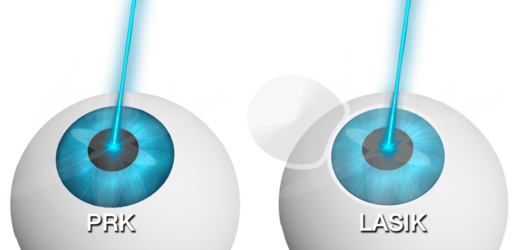
PRK Vs LASIK
1- PRK (Photrefractive Keratectomy)
This procedure involves careful removal of the top most layer of the cornea also known as epithelium, this is followed by Excimer laser delivery which reshapes the corneal surface – to correct the refractive power of the eye. A contact lens is placed for a few days to support the healing of the eye, the epithelium is very thin (50 microns) and usually grows back within 3 days.
2- LASIK/ ULTRALASIK
This is the traditional LASIK procedure where the corneal flap is created using a microkeratome. The corneal tissue underneath the flap is then reshaped using an excimer laser to correct the refractive error.
3- Femtosecond LASIK:
This is a specialised laser which creates a flap precisely at the desired depth, it is very different from Excimer laser described above and hence needs a separate machine for delivery. Femtosecond laser assisted LASIK is also known as FEMTO- LASIK.
After the flap is created it is lifted and the residual bed is then treated with Excimer laser. At the end of the procedure the flap is reposited back in place, on the corneal bed and patient is discharged with medication.
4- Refractive Lenticule Extraction – ReLEX SMILE / FLEX
This is the most advanced refractive surgery and requires only Femtosecond laser (same laser as described in FEMTO -LASIK). Refractive power of the eye is corrected by using femtosecond laser to create a lenticule (of predetermined size and thickness) within the layers of the cornea. This lenticule can then be extracted in two ways
- Through a 4-5mm incision -this is called Femtosecond Lenticule Extraction (FLEX).
- Through a very small 2mm incision – this is known as Small Incision Lenticule Extraction (SMILE)
Extraction of this lenticule results in altered shape of the cornea and corrects the refractive power. This surgery does not need Excimer laser, Microkeratome blade or flap hence it is popularly known as blade-less, flap-less refractive surgery.
Lens Based surgeries
Lens based surgeries involve ‘in the eye -intraocular’ procedures to correct the spectacle power. It can be further divided as
Implantable Collamer Lens (ICL)
This surgery involves placing an artificial implantable contact lens in front of the natural crystalline lens in the eye. ICL are made of biocompatible material known as collamer (combination of collagen + polymer) and are very different from disposable contact lenses that are used routinely.
Refractive lens exchange
In Refractive lens exchange the natural crystalline lens of the eye is removed and is replaced by an artificial intraocular lens (IOL) of the correct power. This procedure extracts the natural lens from the eye using Ultrasonic energy (Phacoemulsification), hence there is no need of cataract surgery in the future. Femtosecond laser platform can be used to assist in refractive lens exchange procedure.
